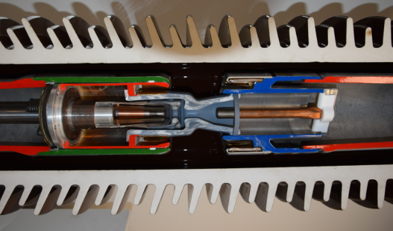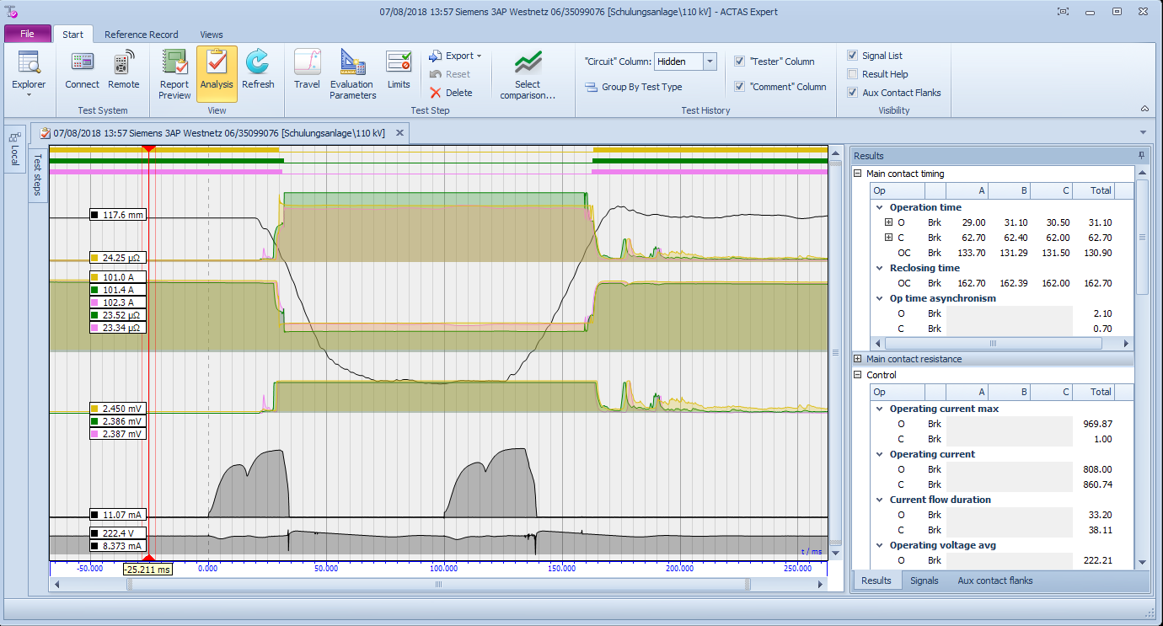ACTAS - Making contact movements visible
 -
11. mayo 2021
-
Circuit breaker testing
-
11. mayo 2021
-
Circuit breaker testing
A look inside the switchgear chamber "Dynamic Timing" and "Dynamic Resistance
In contrast to evaluation via a simple binary signal, as is the case with high-frequency measurement methods, the use of switchgear test systems ACTAS in combination with resistance measuring devices PROMET allows a well-founded diagnosis of breaker units throughout the entire switching process. The result of the measurement is displayed in the form of a curve in which all events of a switching operation can be seen in detail. An exact assessment of the start of movement and end position of the contacts is thus made possible, even time differences between the movements of the main and resistor contacts become visible.
Evaluation of the breaker unit by means of contact resistance analysis
Regular measurements of the static and dynamic contact resistance allow precise statements to be made about the condition of the entire contact system. Necessary maintenance work can thus be detected at an early stage and downtimes prevented. With the PROMET SE resistance measuring device, contact resistance measurements can be carried out on up to 12 or more interrupters and directly integrated into the overall test sequence. The test current can be set up to a maximum of 200 A. Even very small resistances in the single-digit microohm range can be measured with extremely high accuracy. The measured values are included in the evaluation of the test and output in the test report.
A high contact resistance within a switching device leads to a high power loss, combined with thermal stress and possible destruction of the switching device. Faults, such as high contact resistance due to defective connections, can be detected by measuring the static contact resistance. With the dynamic contact resistance measurement, the resistance curve is determined during a switching operation that can be defined as desired. The measurement allows, for example, conclusions to be drawn about the length and condition of arcing contacts in high-voltage switches.
Any questions or additions to the topic? Then please use the comment function here on the blog or send an email to cstuden(at)kocos.com .



Comments are disabled for this post.
0 comments